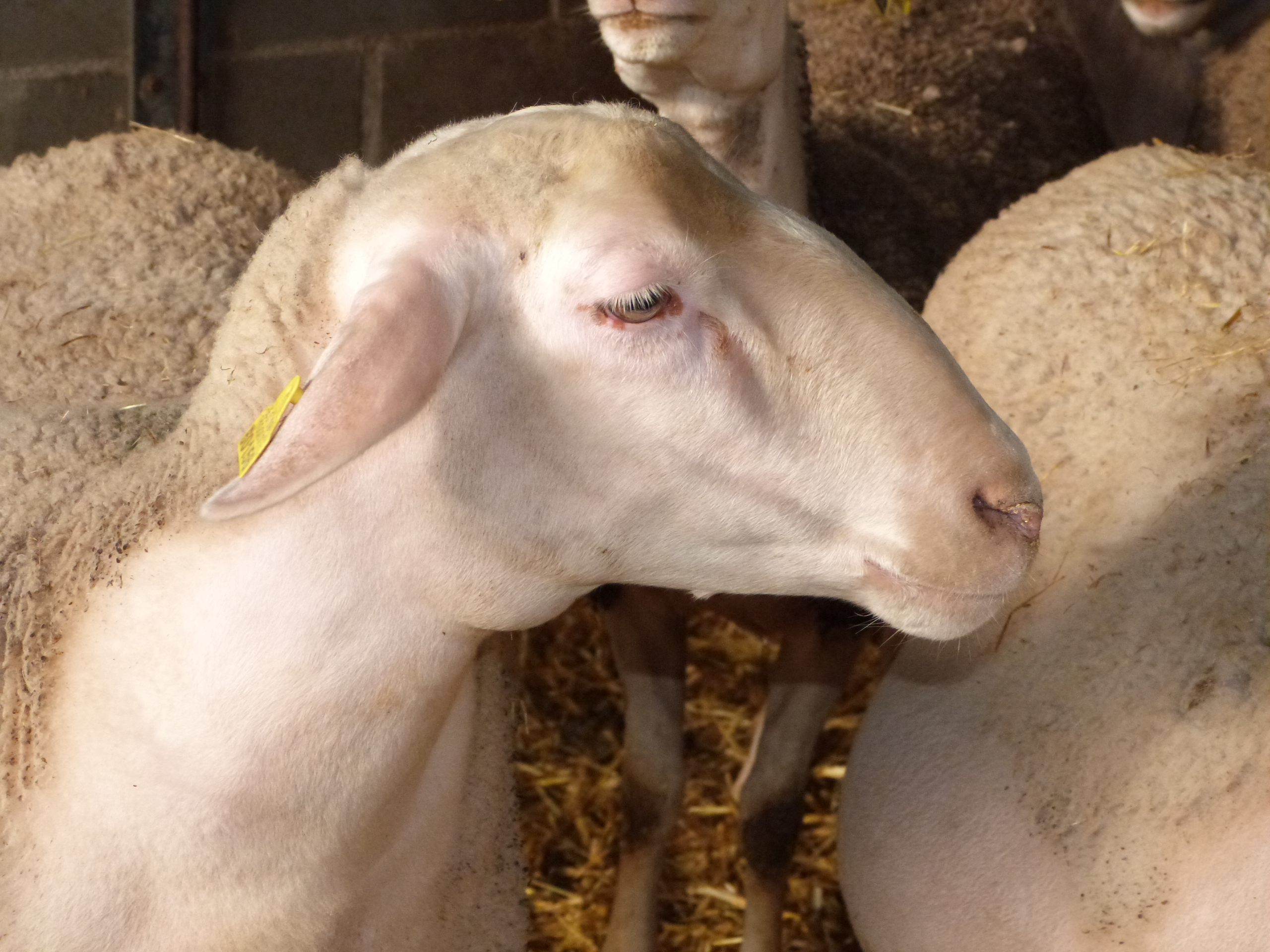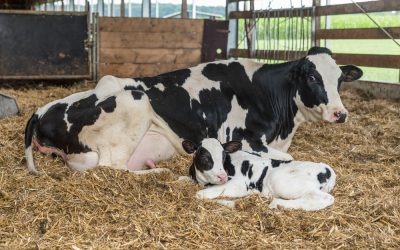X.Manteca, D.Temple, E.Mainau, P.Llonch
More information
Download PDF Technical document
Pain is a major welfare issue and sheep may experience pain as a result of several medical conditions, hoof injuries and mastitis being the most important ones. Some husbandry practices such as tail-docking and castration, which are carried out in several countries, are also painful. Mulesing (i.e. cutting wool-bearing and wrinkled skin from the perineal region and adjoining hindquarters of sheep) is done in Australian Merino sheep to prevent flystrike, and has been shown to be painful. Painful husbandry practices will be covered in a forthcoming fact sheet dealing with treatment of pain in sheep.
Pain management in sheep is often inadequate and one of the reasons given by veterinarians for not administering analgesics to sheep in pain is the alleged difficulty to identify and assess pain in this species. Therefore, having valid, reliable and feasible indicators of pain in sheep will significantly contribute to better pain treatment and may increase awareness of pain as a major welfare issue among veterinarians and producers.
Pain can be assessed using behavioural and physiological indicators. Physiological indicators include hyperalgesia and plasma concentration of cortisol and acute phase proteins. Hyperalgesia is an increased pain response to a noxious stimulus and can be measured by applying a mechanical stimulus which increases gradually in pressure until the animal responds by moving. Although widely used in research, physiological indicators which are measured in blood are not feasible in field conditions and will not be discussed in this fact sheet.
Pain assessment tools rely mainly on general changes in behaviour, as they are sensitive and non-invasive indicators of pain. Recently, changes in facial expression have been shown to be very useful. Additionally, scoring systems for mastitis and lameness (which are among the main medical conditions associated with pain) are also available to be used in sheep.
GENERAL CHANGES IN BEHAVIOUR
Behavioural changes such as lip curling, trembling, vocalization and abnormal postures have been described in lambs undergoing tail-docking or castration. In general, sheep in pain may show the following signs:
Reduced feed intake and rumination.
Licking, rubbing or scratching painful areas.
Reluctance to move.
Grinding their teeth and curling their lips.
Altered social interactions.
Changes in posture to avoid moving or causing contact to a painful body area.
FACIAL EXPRESSIONS
Facial expression scoring systems for pain assessment have been developed for a variety of species including laboratory rodents, rabbits and horses. These systems have been shown to be valid and reliable indicators of pain severity in animals and moreover they require minimal time.
More recently, a Sheep Pain Facial Expression Scale (SPFES) has been developed. SPFES has been shown to be able to identify sheep suffering pain caused by mastitis or footrot. Inter-observer reliability was very high and minimum training was required. The authors concluded that “SPFES offers a reliable and effective method of assessing pain in sheep after minimal training”.
The SPFES includes five traits, each being scored as 0 (not present), 1 (partially present) or 2 (present) (see Figures 1 and 2):
- Orbital tightening – there is a closing of the palpebral fissure by the eyelids and a narrowing of the eye aperture.
- Cheek tightening – there is a more convex shaping to the cheek in the area of the masseter muscle.
- Abnormal ear posture – ears become fully rotated ventrally and caudally.
- Abnormal lip and jaw profile – the jaw profile appears straight to concave.
- Abnormal nostril and philtrum shape – a “V” shape between nostril apertures is present.

Figure 1. Side view of a sheep head showing four areas used in the Sheep Facial Expression of Pain Scale: (1) eyes – degree of orbital contraction, (2) cheek – degree of contraction, (3) ears – posture, and (4) lip and jaw – profile.

Frontal view of a sheep head showing two areas used in the Sheep Facial Expression of Pain Scale: (1) ears – posture and (2) nostril and philtrum – shape.
SCORING LAMENESS
Lameness refers to an abnormality of movement and is particularly evident when the animal is moving. Lameness is a common problem in sheep and most cases of lameness are caused by infections of the hoof. Lameness indicates that sheep is feeling pain and several studies have shown that lameness causes hyperalgesia. Lameness can be scored following a 4-point scale that takes into account the smoothness of movement, whether weight is borne equally on all four feet, presence of head bobbing, length of the stride and reluctance to stand or move.
SCORING MASTITIS
Mastitis is the presence of infections in the udder of lactating ewes and causes pain and hyperalgesia. Mastitis can be assessed using a 3-point scale that takes into account the presence of lesions and lumps in the udder as well as whether redness or hardness is detected in the udder.
“ HAVING GOOD INDICATORS OF PAIN IN SHEEP WILL CONTRIBUTE TO BETTER PAIN TREATMENT AND WILL INCREASE AWARENESS OF PAIN AS A MAJOR WELFARE ISSUE. ”
SUMMARY
Pain management in sheep is often inadequate and this is partly due to the alleged difficulty to identify pain in this species. Pain assessment tools rely mainly on behavioural changes, as they are sensitive and non-invasive indicators of pain. Changes in facial expression have been shown to be very useful to assess pain in sheep. Scoring systems for mastitis and lameness are also available for the use in sheep.
REFERENCES
- AWIN (2015) Welfare assessment protocol for sheep. DOI: 10.13130/AWIN_SHEEP_2015.
Fitzpatrick J, Scott M and Nolan A (2006) Assessment of pain and welfare in sheep Small Ruminant Research 62: 55-61. - Langford D J, Bailey A L, Chanda M L, Clarke S E, Drummond T E, Echols S, Glick S, Ingrao J, Klassen-Ross T, Lacroix-Fralish M L, Matsumiya L, Sorge R E, Sotocinal S G, Tabaka JM, Wong D, van den Maagdenberg A M J M, Ferrari M D, Craig K D and Mogil J S (2010) Coding of facial expressions of pain in the laboratory mouse Nature Methods 7: 447–479,
- McLennan K M, Rebelo C J B, Corke M J, Holmes M A, Leach M C and Constantino-Casas F (2016) Development of a facial expression scale using footrot and mastitis as models of pain in sheep Applied Animal Behaviour Science 176: 19-26.
- Molony V, Kent J E, McKendrick I J (2002). Validation of a method for assessment of an acute pain in lambs. Applied Animal Behaviour Science 76: 215–238.
- National Research Council (2009) Recognition and Alleviation of Pain in Laboratory Animals. Washington: The National Academies Press.



